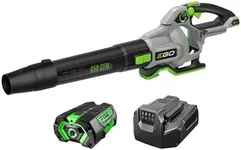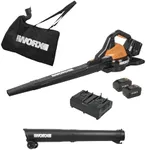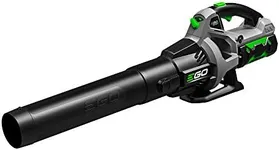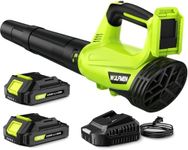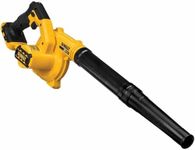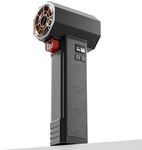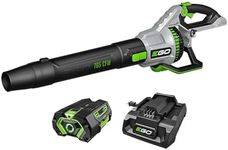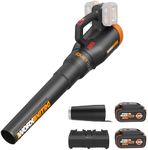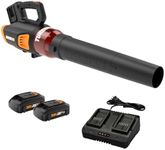Buying Guide for the Best Cordless Leaf Blowers
Choosing the right cordless leaf blower is about matching the tool to your yard size, the types of debris you typically encounter, and how comfortable you want your yard work to be. Cordless models offer a lot of freedom without being tethered to a power outlet, making them convenient for quick cleanups as well as larger jobs. Understanding the key specifications will help you pick one that keeps your outdoor spaces tidy with the least hassle.Battery VoltageBattery voltage tells you how much power the blower’s motor can deliver. Higher voltage usually means more blowing strength, which helps with moving heavy, wet leaves or debris. You’ll see values ranging from about 18V up to 80V or sometimes higher. Lighter jobs, like dry leaves or dust, can be managed with blowers in the 18V to 40V range, which are usually lighter and easier to handle. For bigger yards or tougher tasks, a higher voltage blower provides the extra push you'll need. Consider what you expect to clean up most often and pick a voltage level that matches the challenge.
Battery Capacity (Amp Hours/Ah)Battery capacity, measured in amp hours (Ah), tells you how long you can use your blower before needing to recharge. A higher number means longer usage per charge. Typical ranges are from about 2Ah to 8Ah. If your yard is small or you mostly do quick cleanups, a lower capacity battery may be enough and will keep the blower lighter. For larger areas or long jobs, a higher capacity battery saves you time and hassle, since you won’t need to stop and recharge as often.
Air Speed (Miles per Hour/MPH)Air speed measures how fast air comes out of the blower’s nozzle, usually given in miles per hour (MPH). Higher MPH can help sweep away stubborn or wet debris. Light-duty tasks like moving dry leaves are manageable with speeds around 90-120 MPH, while 150-200+ MPH gives you the force for tougher situations. Choose based on what kind of debris you have: if you fight with heavy, damp leaves, more air speed will be your ally.
Air Volume (Cubic Feet per Minute/CFM)Air volume, given in cubic feet per minute (CFM), tells you how much air the blower pushes out per minute. A higher CFM means you can move more leaves or debris at once, making big jobs faster. Light tasks need around 200-350 CFM, while heavy-duty cleanup is quicker with 400 CFM or more. If you want to clear wide areas efficiently, focus on getting a blower with a higher CFM.
WeightWeight affects how comfortable the blower is to use, especially for longer periods or if you need to lift it overhead. Lightweight models (under 7 pounds) are easier to handle for most people and are ideal for quick or short jobs. Heavier models may provide more power, but consider how long you’ll need to hold and move the blower. If comfort is important to you or if you have any physical limitations, prioritize a lighter blower.
Noise LevelNoise level is measured in decibels (dB) and affects both your comfort and the peace of your neighborhood. Most cordless blowers are quieter than gas models, but noise can still be a concern if you have close neighbors or want to work early or late. Lower dB ratings mean a more pleasant experience. If you’re sensitive to sound or your area has noise restrictions, this spec is worth considering.
Ergonomics and FeaturesErgonomics refers to how comfortable and easy the blower is to hold, carry, and operate, including handle design and balance. Some blowers also offer features like variable speed control, cruise control, or interchangeable batteries with other tools. If you plan to use the blower often or have specific comfort needs, pay attention to these details when making your choice. Features like speed adjustability or quick battery swaps could make your yard work smoother and more enjoyable.
